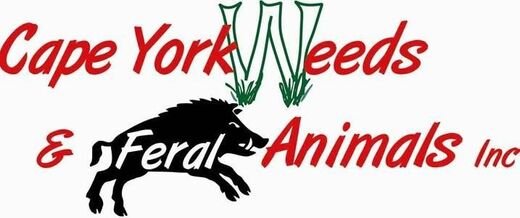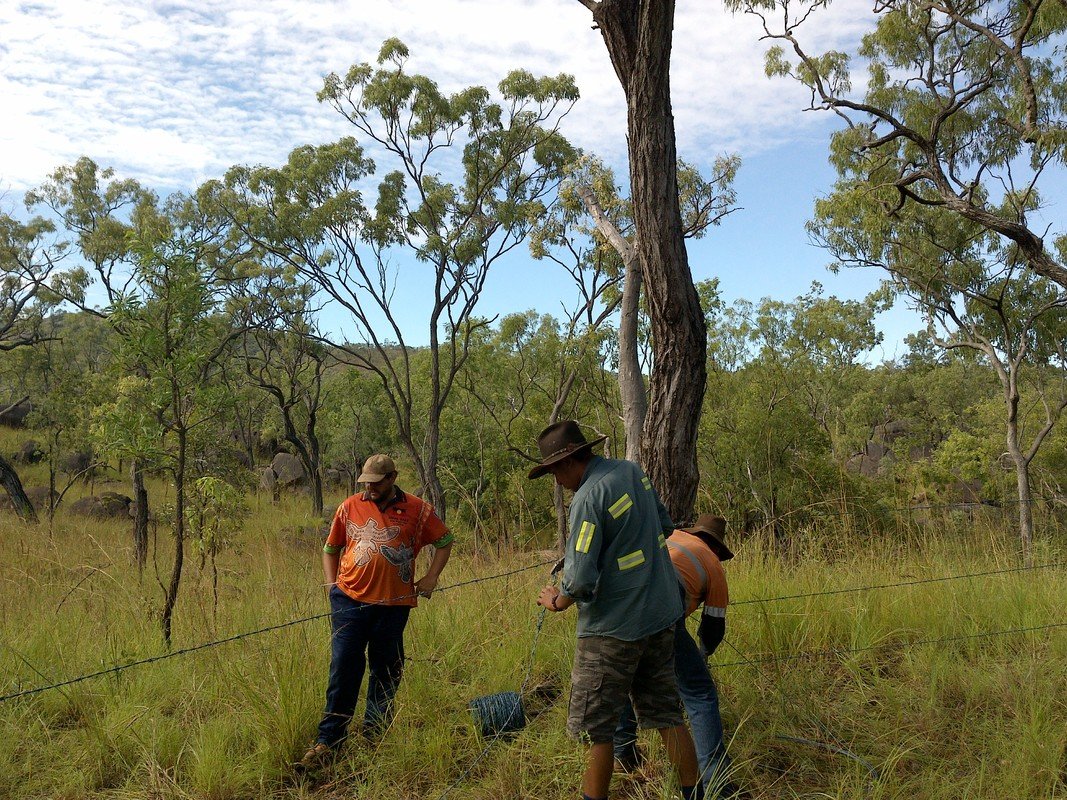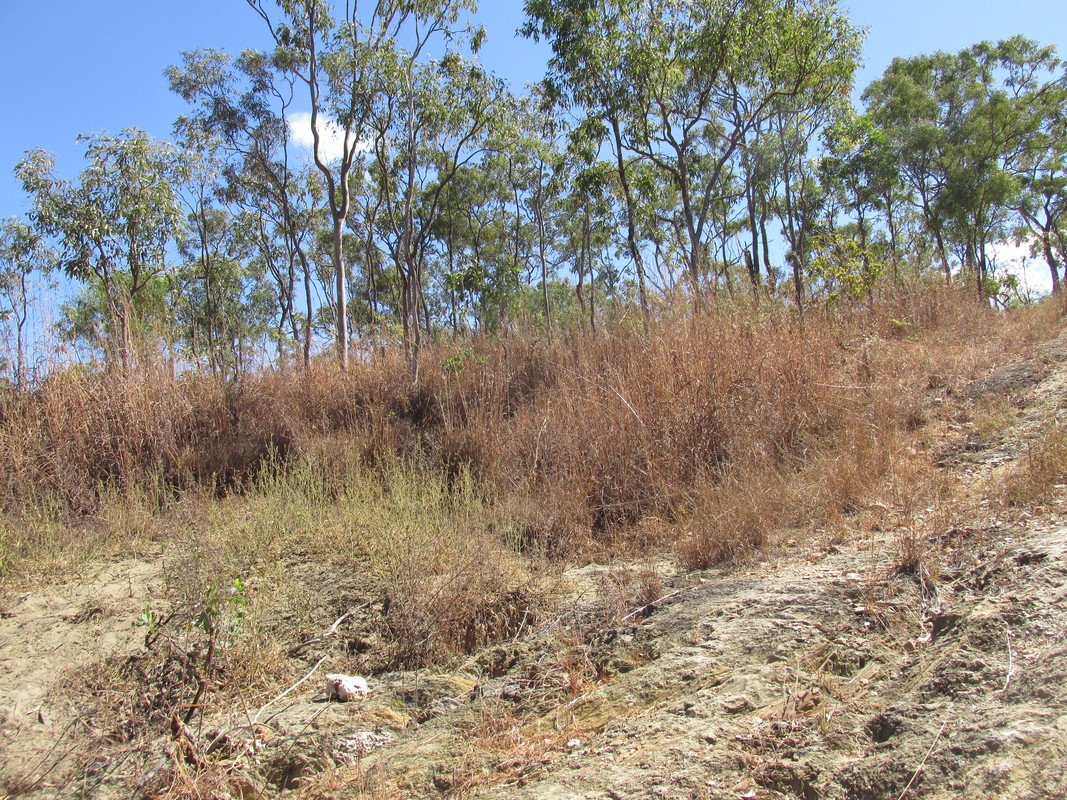Strategic Gamba Grass Control Report 06/06/2018 - 26/06/2018
We were asked by Cape York Natural Resource Management to commence a Strategic Gamba Grass control program at BonneyGlen Station, Cooktown.
This is a part of a Strategic Gamba Grass control program at the head of the Palmer-Mitchell River catchment systems.
We have identified the start of the Gamba Grass infestation in the top of the Palmer River and where Doughboy Creek flows into the Palmer.
Eventually these catchment river systems run into the Gulf of Carpentaria.
Gamba Grass has the potential to negatively affect all productive and natural ecosystems all the way to Kowanyama in the Gulf, changing the native environment forever.
We had reasonably late start to the spray program, however.
Travelled to BonneyGlen Station to conduct the Strategic Gamba Grass control program
This program is a part of a control program for Cape York Natural Resource Management.
Gamba grass is classified as Restricted Matter Category 3 under the Biosecurity Act 2014.
Most of the control program was carried out by three team members and equipment over a three-week period. We also had volunteers from the Landholder(Gummi Junga Aboriginal Corporation).
• Liaised with the Indigenous Landholder group and the on-ground manager at Bonney Glen.
• Gummi Junga Aboriginal Corporation were keen to fulfil their obligations under the Biosecurity Act.
• A strategic survey and control program was designed and established.
• Gamba is classified as a high priority weeds for control on the BonneyGlen Pest Management Plan.
• A survey was carried out to determine where and how the control work was to be undertaken.
• The gamba grass surveyed and is quite thick and covers huge areas, especially along gullies, river, river flats and grazing paddocks.
• The Gamba grass is very well established, with some of the grass being over three metres tall.
• Gamba is intertwined in amongst the blood wood and iron wood trees everywhere.
• If not controlled, late season fires have the potential to wipe these tall trees, and the native grass species that are there.
• This affects all native species and the natural ecosystems that are in this catchment area.
• The Gamba grass has the potential to spread further along the river and gully systems.
• Vehicles, humans and stock, travelling along these areas also have the capacity to spread it out further from these areas.
• Because of the sheer size of these areas, CYWAFA_ INC developed a comprehensive Strategic Control Plan.
• As we had a late start to the control program and resources are limited, it was decided to concentrate on the start of the Gamba grass infestation and to start pushing it back down the river.
• It will also provide a buffer zone to limit the spread of Gamba back out into the pasture areas.
• Other pest species declared under the Biosecurity Act were controlled as we went along.
• Other species controlled includes Sicklepod, Grader Grass, and Rubber vine.
• Regular meetings were conducted to coordinate the control activities. Cape York NRM’s Contracts Manager, Vicki Wundersitz initially liaised with us and let us know what was wanted.
Gamba grass had been planted as a part of pasture improvement by previous land managers, as it had been run as a cattle station.
As Gamba grass is a high nutrient cattle and horse feed, it was planted in these paddock areas.
• Conducted a tool box talk and carried out a risk assessment before any control work was commenced.
• As the area was very rugged and hilly, there was only limited access to the bigger areas.
• As resources are limited, we concentrated on the known Gamba grass start area.
• Peripheral areas such as Doughboy Creek, trafficable areas and cattle yards were surveyed and controlled to try and stop the spread of Gamba grass by wind, water, humans, stock and native animals.
• We commenced spraying as the Gamba grass had started to flower and seed,
• Even though it was bigger, we were still able to get rid of the parent plants as they were still actively growing.
• By the time we had finished the control program we were tasked with, the remaining gamba grass had started to dry out from the wind, and it was getting to dry to spray.
• We got rid of the mature parent plant so that it could not re grow, as it is a perennial species.
• Therefore, reducing the density of the Gamba grass regrowth was the priority.
• By controlling the some of the Gamba before seeding we were able to start reducing the viable seed bank along the strategic areas we sprayed.
• Monitoring points were set up, using easily identifiable natural features as scale objects.
• A series of Gamba grass surveys were carried out on all the areas we could get to.
• Everything that was surveyed was mapped, including the spraying that was completed.
• Over one hundred and thirty-three hectares of strategic mapping, control and survey was completed.
• There was as far greater area surveyed to find out where the Gamba grass was.
• All areas of control work were mapped using the GIS and QGIS systems.
• All data has been sent to Cape York NRM.
• The data and herbicide usage sheets were also completed.
• It was advised to let the controlled Gamba grass areas to naturally mulch down, rather than burn. This would provide a blanket of mulch which would suppress seedling regrowth from the seed bank. Further reducing the amount of seed in the ground.
• It would also stop the seedlings, which are very light and feathery, being spread over vast areas by the fire front.
• With less Gamba regrowing from seed it would take far less resources to spot spray anything coming up.
• Cape York Weeds and Feral Animals Incorporated spent as much time as possible controlling all trafficked areas, watering points, and high conservation areas.
• A follow up control program needs to be implemented to further protect and reduce the impact of Gamba grass in these fragile ecosystems and habitats.
All of the Gamba Grass Control Program that was conducted was extremely successful.
Cape York NRM, Gummi Junga Aboriginal Corporation and Cape York Weeds and Feral Animals Incorporated, are to be commended for their professionalism and willingness to get the job done.






